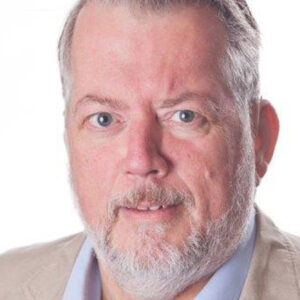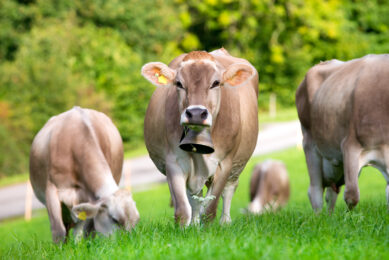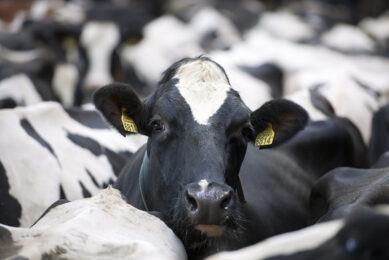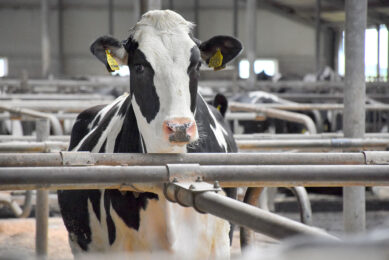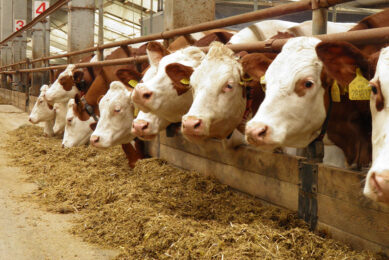Growth Ambition: To Build-Up Herd to 25,000
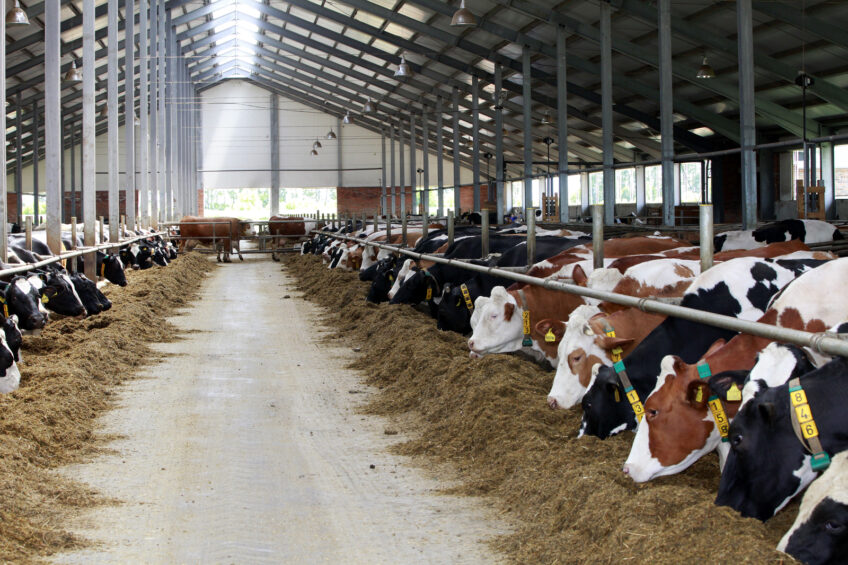
Stefan Dürr farmed on 17 acres in Germany, until he left for Russia in 1989. Now he milks 16,900 cows on 186,000 hectares, and he will grow to 25,000 cows within three years by means of stock exchange financing.
The barn under construction could have easily been located in North West Europe or the United States. Spacious, with a feed alley in the middle, broad solid floors and above all: volume and large air intakes behind an electrical winchable windbreak. Steel frames, insulated roof and space for some 400 cows. The stable, however, is located 150 kilometres south of Novosibirsk, the capital of Siberia. The time difference with Europe is six hours, with China (Beijing) only one hour.
“This barn costs €5,000 per pen, and we have realised it a year earlier than planned, completely out of free cash flow,” says Stefan Dürr, the majority shareholder in Ekoniva, a holding that milks just about 17,000 cows and cultivates 186,000 hectares in four Russian and two Siberian regions.
Dürr sold his company of 17 hectares in the south of Germany in 1989 and emigrated to Russia. He started a business in machinery which over the course of 20 years became Russia’s largest John Deere-importer. After 2002, he bought kolkhoz farms (a form of collective farms in the Soviet Union) that were on the verge of bankruptcy. The first had 500 dairy cows. Large subsidies prompted him to quickly expand in dairy cattle since 2006. Since then, five new complexes with 1,500-2,000 dairy cows each have been established. Three complexes are under construction; the aim is to milk 25,000 cows by 2015. All these complexes are on the same footing; there are, however, minor differences in implementation because of the considerable climatic differences between regions.
Each new complex has five cattle barns, the construction takes three to four years to complete. It starts with a barn of 350-400 cows, connected to a 2×8 herringbone parlour. After the construction of the third barn for 200 cows, a new large parlour, a holding pen, treatment stalls and a calving area are established. Young and treated cows continue to go through the ‘old’ herringbone ensuring continued optimal capacity in the large rotary or rapid exit milking parlour. This may seem expensive, but that 2×8 has been used for as many hours as it would have been on a Western European company in the course of ten years. After the construction of the large parlour, the last two barns are realised in the following year.
Sibirskaya Niva is solid as a rock
Sibirskaya Niva, the company under Novosibirsk, was created by the purchase and merger of eight kolkhoz farms. Now, four locations house 3,000 dairy cows in total; 2,000 in modern barns, 1,000 in old tie stall barns from the Soviet period. The company comprises of 36.540 hectares, of which 16,000 is used for forage crops, 14,000 for grain cultivation and over 6,000 hectares lie fallow to improve the structure and to store water. A total of 600 people are on the payroll all year round, with an additional 200 people on the payroll during the summer. There is a business manager for both the agriculture as well as the livestock branch.

Henk Riswick
When Ekoniva takes over a kolkhoz farm, it keeps on most of the staff members. The first two months are used to examine how the farm operates, then the company makes severe cuts to the workforce.
To make the remaining employees more profitable the dairy branch is modernised and scaled up considerably. This also benefits the staff. They make more than twice the money they made before. “And more importantly: they receive their wages each month, and added to that their investments in home improvement are being supported,” says Ramon Schenk, cattle manager. “Some of the kolkhoz farms had not paid wages in three years.” The fact that the workers are doing well is now quite visible in the region: houses have been improved and everything looks much better than in other regions that i visited.
Run a tight ship with flexible personnel
Dürr and his colleagues expected flexibility from their employees, that they would work in barns one day, and then help out with the forage harvest the next and even that the inseminators should also help change the bedding. Schenk gave the employees a choice; more people could be hired or the employees could earn more, but then they would have to be more flexible and do more tasks. People had no trouble making the decision.
A complex for 1,600 dairy cows that was finished in 2011 is running like a charm. Cows are healthy, the average production per lactating cow is just above 30 kilo’s a day, and according to the computer lists there is a consistent calving pattern. Schenk: “We work with an ov-sync programme (synchronisation programme in which cows are being sprayed into heat from a set day; Ed.) from day 56 after calving. We only finish that programme with a quarter of the cows. Three quarters come into heat by themselves.”
Occasionally a crippled cow can also be found here. There are protocols in place. Each morning a veterinary nurse checks all the cows entering the milking parlour. Upon leaving the animals that are deviant or in heat go into the treatment stalls, or they are directed towards the hoof trimmer. Schenk: “The most important issues are already put into protocols. Now we are working on protocols for things like cleaning up, littering and checking the animals. An American supports us in this. Ultimately, even the way someone holds a broom and where the broom is placed should be put into a protocol so that everyone can perform different tasks.”

Henk Riswick
Striking things
Ekoniva started with livestock and agriculture in the region of Voronezh, 600 kilometres under Moscow. Three new complexes are operational and one is currently under construction. The companies look fine, but there are a few striking things. For instance the fact that the cow manure contains a lot of undigested corn, and that one company shows a decrease in the number of calvings with one in four cows being dry mid-July. There is also insufficient straw to litter the boxes. Which is strange, since Ekoniva cultivates over 15,000 hectares of grain in this region. Most of the straw is chopped up during combining, however, and then ploughed into the ground. Too much undigested maize in the manure is due to insufficient control of the feed during silage.
Control and management are clearly of a lower level than on Sibirskaya Niva. Dürr: “The dairy branch in Voronezh grew extremely fast, from 2,000 cows in 2008 to 11,000 now. I leaned on a young management team, that unfortunately was not able to pull this off. I’ve learned that you need experienced people next to young managers. I have asked some of the retired people to come back. The company in Siberia is manageable with one layer of management in terms of scale, Voronezh needs an extra layer for the dairy, agriculture and feed production branches. Therefore, it will be split into three separate companies in 2014 under one holding company; 2013 is a transition year. The companies will function completely independent of each other, each with its own machines, cows, facilities and personnel. ”
The Swiss Schenk will manage the entire cattle sector. In the layer under him, some people will be responsible for one or more locations. In addition, even more benchmarking will occur between the companies and investments will be made with regard to courses, especially for management staff.
To reduce labour costs even further Ekoniva increases commercializsation. It sells 380 tonnes of milk daily, of which 60% goes to Danone by contract. The milk price is at least 5 cents higher than that in the Netherlands, according to Dürr. Still, that doesn’t stop him from setting up a dairy factory with a processing capacity of 30 tonnes per day: “I don’t want to depend on just Danone.”
High costs because of quick depreciation
The cost of milk is around the € 0.35 in this company, of which more than a third goes to housing. The Russian interest-rate subsidy on cattle barns has a maximum term of seven years. Because refinancing after that is uncertain, the loan is also repaid in those seven years. The first year is a start-up year, so that leaves six years to earn back the loan. At construction costs of € 5,000 per pen, that leads to about 13 cents per kilograms of milk for depreciation and maintenance. Barns built after 2012 get twelve years of interest-rate subsidy. Ekinova now owns 101,000 hectares. Land purchasing is a long-term process. In 1992, the employees in sovkhozes received land titles, often for lots of 5 hectares. The exact plots were not recorded, the region was. The average selling price of such a ticket is € 250 per hectare. Once Dürr has purchased 250 hectares in an area, he consults with the head of the region about which grounds it concerns. These grounds are then measured and registered at a cost of € 50 cadastral per ha, resulting in the total costs of around € 300 per hectare. Registered land yields about € 1,000 per hectare. A money printing machine is nothing compared to this. Lease of land is often in kind: 100 kilograms of wheat or barley per hectare per year. Lessors can also get this value in cash, but still often need the grain for feeding their pigs and chickens.
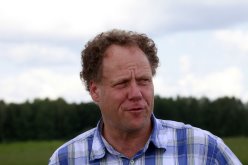
PROFILE
Company: Stefan Dürr (49) is the majority shareholder in Ekoniva-APK, which owns 16,900 dairy cows and cultivates 187,000 hectares of land in six regions in Russia. Approximately 70,000 ha is agriculture and 100,000 ha is intended for feed production. Ekoniva is largely (for € 110 million) financed through bonds, which are being traded at the stock exchange of Stuttgart. Dairy Global visited two offices of the dairy cattle conglomerate, under the Siberian Novosibirsk and near Voronezh, South of Moscow. Strategy: very fast growth through stock exchange financing.
Join 13,000+ subscribers
Subscribe to our newsletter to stay updated about all the need-to-know content in the dairy sector, two times a week.


